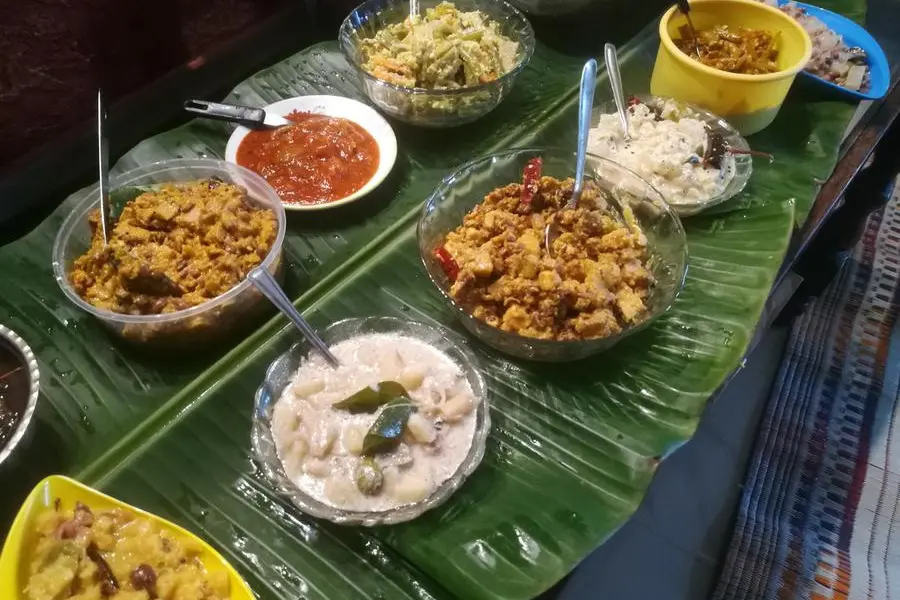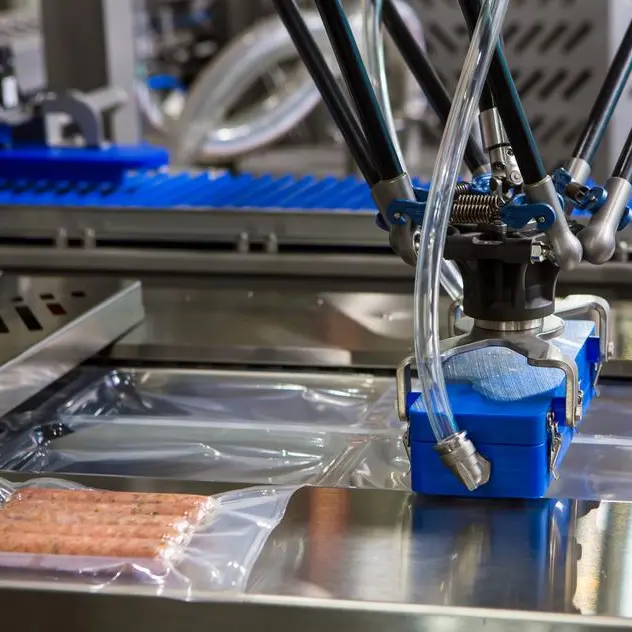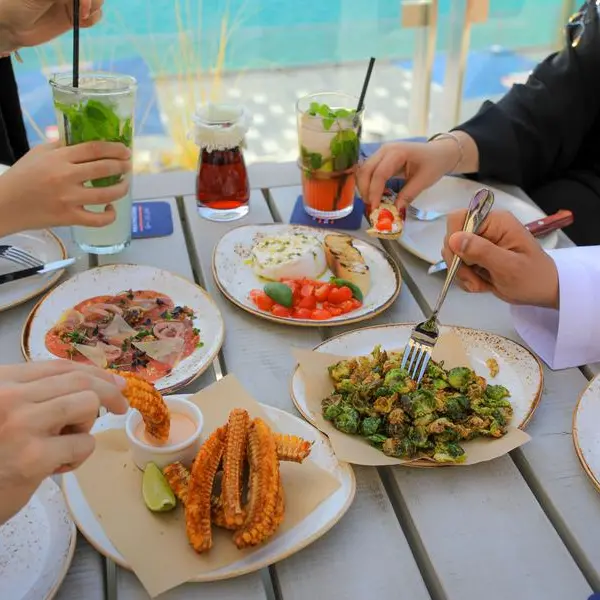PHOTO
Today is Thiruvonam, the tenth day of the countdown to Onam - an annual cultural festival marked by Keralites. Many restaurants in the UAE are marking the day by serving Onasadhya (translation: Onam feast), a three-course meal that includes over 20 varieties of items and is eaten on a banana leaf. Today, we decode the feast, what is served and how it is eaten.
The sadhya (feast) is meant to activate all tastebuds of a person by serving curries that are sweet, sour, spicy, salty and tangy. The leaf itself is divided into the upper and lower portions. The upper portion is where all the curries are served, and the lower portion is where the rice is served.
The dishes served towards the tip are the condiments like salt, banana chips, sharkaravaratti (fried banana chips coated in jaggery) and pappadam. These are usually considered appetizers which people eat as the rest of the sadhya is being served.
Next, a variety of pickles like lime and mango are served. The pickles are extremely beneficial for gut health. As is the puliyinji, a dark brown sweet-sour and spicy curry made of ginger, tamarind, green chillies and jaggery. A whole banana is served as it helps to neutralize the acids in the food and helps in digestion.
The rice served with Onasadhya is usually parboiled Kerala matta rice (brown rice). When the hot, steaming rice is served on to the banana leaf, the aroma wafts through the air, along with that of the accompaniments. It is enough to make anyone’s mouth water.
The first step is to eat a portion of rice with the parippu (dal) and ghee, which offers a good mix of protein and fat. The turmeric in the parippu is said to neutralize any unwanted oxidants. The fat in ghee aids in digestion. Some people like to eat their pachadi along with this. With a yoghurt base, vegetables and a splattering of mustard and chilli, this curry is extremely nutritious.
Next, diners are encouraged to dig a small hole in their mound of rice to pour sambhar into. Made with different kinds of vegetables, the piping hot sambhar combines a plethora of spices to make for one delicious curry.
The aviyal is a combination of more than 5 vegetables and has a yoghurt base, seasoned with coconut oil and curry leaves. The thoran is a dry dish made of vegetables like cabbage with coconut. These are usually eaten along with sambhar.
The erissery, another nutritional side dish usually made of pumpkin; the kottu curry, made of two or three different kinds of vegetables and red beans; a dry vegetable dish, usually beans; kichadi, made of cucumber and aids in hydration; and the olan, made of white gourd, black eyed beans and coconut milk add flavor and nutrition to the sadhya.
The acidity stabilizers are the mambazha pulissery, rasam and moru (buttermilk). The pulissery is made of ripe mangoes and is an explosion of mild, tangy, sweet and spicy tastes. The rasam is made of tomatoes and spices including asafoetida and helps bring acidity under control. The buttermilk is usually had after the payasam (dessert) and aids in digesting.
The final course is the payasam or dessert. Depending on the place, two or three varieties of payasam are served. These are usually served on the leaf or in a cup. “It is usually best to eat the lighter colored payasam first and the darker colored later,” says Roy Pothan, the corporate chef at Calicut Paragon restaurant. “Some people like to eat their pappadam with the payasam. Some others like to mix their banana into this mix as well.”
Some people like to keep aside a handful of rice to eat after payasam to remove the sweet taste from their mouth. This rice is usually mixed with buttermilk and eaten at the end. At the end of the meal, fold the leaf away from you and enjoy a glass of hot pink water. This is called karingali water and is boiled with medicinal herbs to aid digestion.
Copyright © 2022 Khaleej Times. All Rights Reserved. Provided by SyndiGate Media Inc. (Syndigate.info).





















